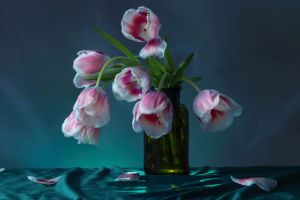Daylilies, scientifically known as Hemerocallis, are a beloved staple in gardens around the world. These vibrant, hardy flowers captivate with their stunning blooms and resilient nature, making them a favorite among gardeners and flower enthusiasts.
With over 80,000 registered cultivars, daylilies offer an incredible variety of colors, shapes, and sizes, bringing a splash of beauty and elegance to any landscape.
The Beauty of Daylilies
Daylilies are perennial plants, meaning they come back year after year, adding a consistent and reliable burst of color to gardens. Each flower typically lasts just one day — hence the name “daylily” — but a well-established clump can produce hundreds of blooms throughout its flowering season, creating a continuous show of beauty. Their blooms are most commonly found in shades of yellow, orange, red, and pink, though modern hybrids can range from nearly black to pure white.
Why Gardeners Love Daylilies
One of the main reasons gardeners love daylilies is their exceptional hardiness. They are adaptable to a wide range of soil conditions and climates, thriving in USDA hardiness zones 3 through 9. This resilience makes them a reliable choice for gardeners looking for low-maintenance beauty.
Daylilies are also relatively drought-tolerant once established, making them an ideal choice for areas with water restrictions. They require minimal care — just some regular watering and occasional deadheading to remove spent blooms. Plus, they are largely pest-resistant and can even help deter deer from nibbling on other plants.
Varieties and Cultivars
With thousands of cultivars to choose from, there is a daylily for every taste and garden style. Some popular types include:
Stella de Oro: Known for its compact size and prolific blooming habit, this cultivar produces golden-yellow flowers from late spring to fall.
Ruby Spider: A striking variety with large, ruby-red flowers and a contrasting yellow throat, perfect for making a bold statement in the garden.
Happy Returns: A re-blooming variety that produces cheerful, lemon-yellow flowers throughout the growing season.
Whether you prefer classic, trumpet-shaped blooms or more exotic, spider-like flowers, there’s a daylily to suit your garden.
Growing and Caring for Daylilies
Daylilies are incredibly easy to grow, making them a great choice for beginners and experienced gardeners alike. They prefer full sun but can tolerate partial shade, especially in hotter climates. Here are some tips for growing daylilies successfully:
Planting: Choose a sunny spot with well-drained soil. Daylilies can be planted in spring or fall, and they should be spaced about 18 to 24 inches apart to allow room for growth.
Watering: Keep the soil evenly moist during the growing season, especially for newly planted daylilies. Once established, they are more drought-tolerant but still appreciate regular watering.
Feeding: Daylilies benefit from a balanced fertilizer applied in early spring and after the first bloom to encourage continuous flowering.
Dividing: To keep daylilies healthy and vigorous, divide them every 3 to 5 years. This is best done in early spring or after they finish blooming in late summer.
Daylilies in Landscape Design
Daylilies are incredibly versatile in garden design. They work well in borders, as ground covers, or as standalone specimens. Their vibrant colors and attractive foliage can complement a wide range of other perennials, shrubs, and annuals, making them a flexible choice for mixed planting schemes.
A Garden Classic
With their stunning blooms, resilience, and low-maintenance nature, daylilies have earned their place as a garden classic. They offer endless possibilities for adding color and charm to outdoor spaces, making them a favorite among gardeners everywhere. Lykkers, whether you’re an experienced horticulturist or just starting out, the daylily is a rewarding and delightful flower to grow.


